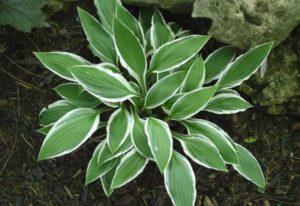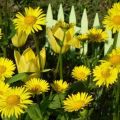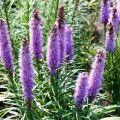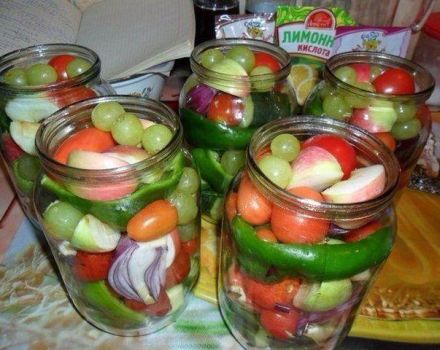Planting and caring for monarda in the open field, the best varieties and cultivation
Monarda is one of the most attractive plants belonging to the Lipoceae family. Its main feature is that it can grow on all continents of the world, as it has excellent resistance to different temperature indicators. Before starting to grow monarda, it is recommended to study planting and care in the open field, species diversity and methods of crop propagation.
Description and characteristics of monarda
The famous specialist, the father of botany, Carl Linnaeus, described the plant in detail for the first time and conducted experiments with its participation. Subsequently, he named it after his good friend, the Spanish botanist Nicolas Monardes. Nicholas himself called it Canadian oregano. Over the centuries, the culture received another name - lemon mint.
Monarda is an ornamental plant, it can be both an annual and a perennial, which is cultivated in the open field. The height of the culture can exceed 1.5 m. The leaves have a pleasant smell, an oblong shape with pointed edges. The buds are collected in an inflorescence, forming a brush of the correct shape. The colors of plants are very diverse. The fruit is in the form of a small nut, in which there are many seeds, which are characterized by high germination, which lasts for 3 years.
The plant does not require frequent transplants, it can grow in one place for 7 years.
Gardeners and landscape designers choose Monarda for its attractiveness and presentability, as well as for its pleasant aroma that can spread over long distances. In addition, the culture is popular in cooking, it is added to dishes as a spice, and tea is brewed.
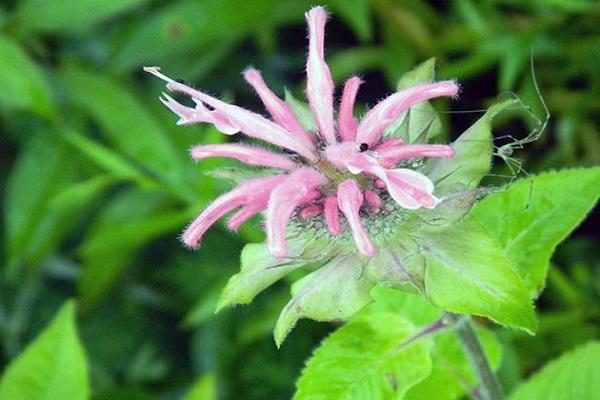
Valuable properties of a flower
Monarda belongs to the number of medicinal plants and is actively used in the medical industry due to the large number of beneficial properties that can cure:
- inflammatory processes of the oral cavity, eyes;
- eating disorders;
- abscesses;
- gynecological ailments;
- fungal diseases of the feet;
- pneumonia;
- tuberculosis;
- anemia;
- chronic fatigue syndrome.
The plant is widely used in cosmetology because of its ability to inhibit aging processes, accelerate the regeneration of epidermal cells. One of the main ingredients of masks, creams and tonics. Monarda-based oil is used during a massage session.
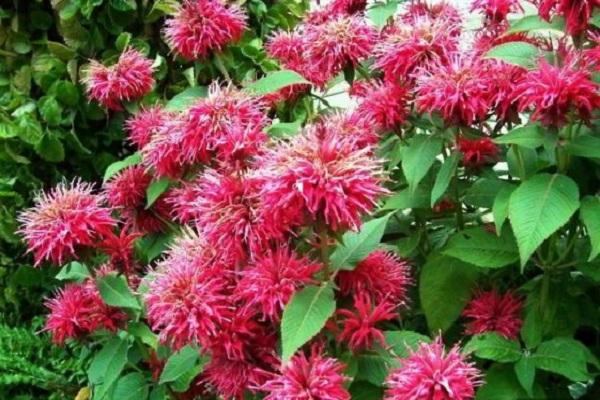
Varieties of culture
There are many varieties of monarda. Usually, experts divide them depending on the duration of the life period, namely: annual, perennial.
Annuals
Monarda boasts many annual varieties, among which are these.
Citrus monarda or lemon
An annual with branched straight shoots capable of growing 150 cm in height. Monarda has lanceolate leaf blades with a serrated edge. The two-lipped flowers are painted in different colors: purple, light yellow, white, red. The flower is prized for its lemon scent, thanks to which its inflorescences are added to tea and used as a spice. The fruit is a nut.
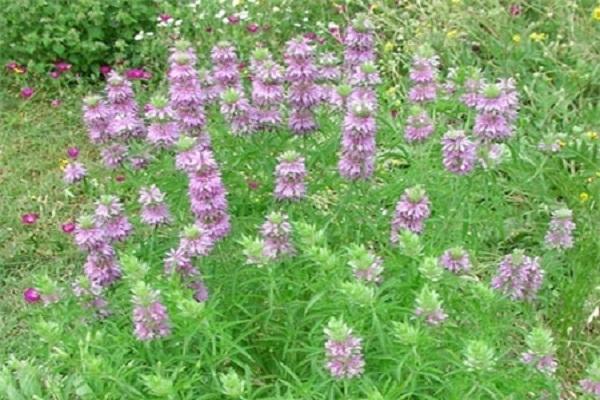
Hybrid monard Lambada
This variety is considered an excellent honey plant and is actively used as an ornamental crop. The hybrid monard is bred artificially, therefore it is not found in the wild. It was first received by breeders in the Netherlands. Its main feature is a strong lemon tart aroma of perennial leaves and stems. Has a similarity in appearance to the lemon monarda.
Point monard
The second name of the plant is horse mint. In height, the monard reaches a maximum of 80 cm. It is actively cultivated not only because of the exquisite fragrant flowers that form elongated thorns at the end of the stem, but also because of the bright salmon-colored leaves surrounding the inflorescences. It happens that such leaves overshadow the buds with their impressive size. The flowering period is about 50 days.
Perennial
The most common perennial types of monarda include the following.
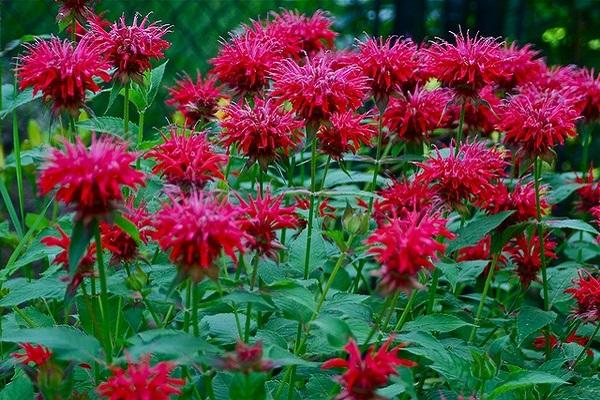
Double monarda Monarda didyma
Perennial plant growing to 1 meter. Monarda grows in the meadows of great lakes, has a powerful root system, a strong stem and opposite leaves located on it. The length of the leaf is 12 cm, the edge is pointed above, has a serrated edging, is colored green, and the stipules are distinguished by a reddish-red hue. The monarda blooms in lilac-purple color, forming a round inflorescence about 5 cm in diameter.
Fist or tubular monarda fistulosa wild bergamot
The main purpose of growing a tubular monarda is to make spices. The bush itself of impressive size reaches 1.2 meters in height, has a fibrous root system. For a long time the tops are decorated with capitate inflorescences up to 5 cm in diameter. The petals of the bud are white or burgundy.
Hybrid monarda x hybrida
Perennial herb, sectioned by combining two common types of monarda Double and Dudchaty. Unpretentious culture to care for, does not require special growing conditions. The main varieties of monarda hybrid include: Scarlett, Mahogany, Elsiz Lavender, Lambada. Each of the varieties differs in color and bush height.
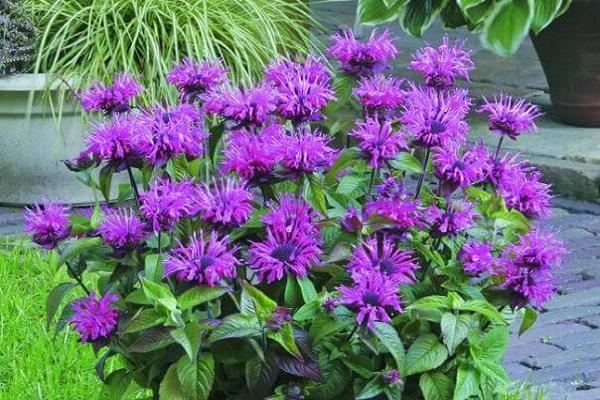
Popular varieties
Gardeners identify several of the most popular varieties of monarda.
Mahogani
A perennial plant with a long root and a height of up to 150 cm. One of the largest flowers among all monard varieties with a thick and strong stem and dark green leaves of small size. The inflorescences have a raspberry-red hue and a pleasant lemon-mint aroma. The minimum diameter of one inflorescence is 7 cm. The flowering of monarda begins in July and pleases until the very frost.
Citrodera Harlequin
Compact, low monarda only 30-35 cm in height. The flowers are collected in an inflorescence called the sultan.Has a sophisticated bergamot aroma, presentable appearance. This variety is in great demand among gardeners.
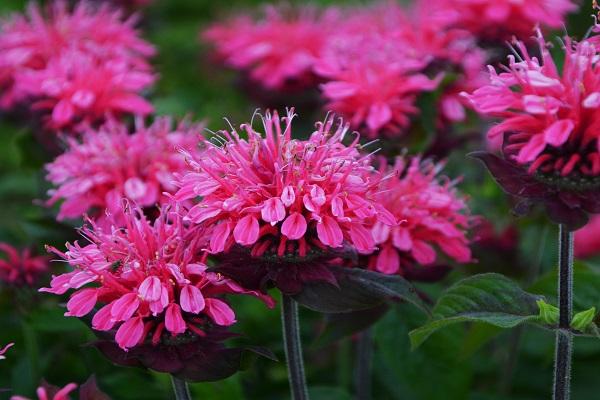
Panorama
Perennial culture with a delicate color of capitate inflorescences, crowning the tops of tetrahedral shoots. The height of the central stem can vary from 60-80 cm. The inflorescence reaches 6 cm in diameter. In autumn, the monarda complements the landscape with its attractive exotic fruits with nuts.
Terry Tale
Winter-hardy perennial monarda with a varied color range of inflorescences, ranging from white to dark wine color. Due to the variety of shades, the culture was named Terry fairy tale. Plant height from 60 to 80 cm. Flowers, collected in capitate inflorescences, are located at the tops of tetrahedral shoots.
Pink Lace
Low-growing monarda up to 40 cm in height and 45 cm in width. The flowers form large, lush inflorescences of a pink-crimson hue. The leaves are dark green and slightly rough. The plant is fragrant, unpretentious and frost-resistant.
Bergamo
The variety is presented in the form of a small bush with serrated leaves of a dark green color. The buds are terry, which is why, according to the observation of gardeners, they have a resemblance to many-legged insects. It grows from the second decade of July to the very frost. The greenery lasts until late autumn. Monarda foliage tastes like bergamot, so it is added to tea.
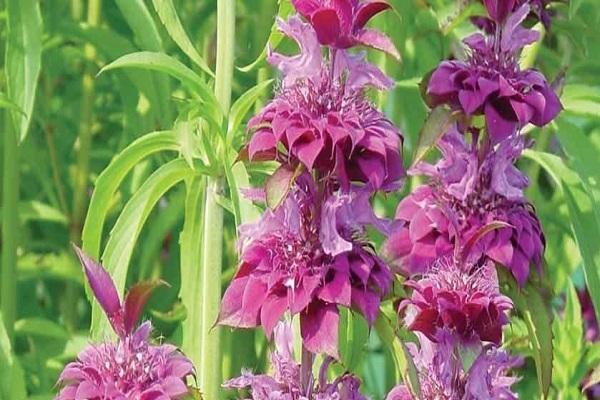
Suprem
A popular perennial variety due to its fragrant cut leaves and fragrant multi-colored flowers. Flowering lasts from July to September and develops well on any soil. Used to decorate local areas in group plantings.
Diana
Decorative monarda with a pleasant mint-lemon aroma, grows in bushes up to 45 cm in height. It has thin peduncles with 5-7 whorls of attractive flowers of various shades that look like a candelabrum. Able to bloom for a long time and abundantly, it is cold-resistant. The variety is recommended for group and single plantings.
Pink Lace (pink)
A short monarda up to 40 cm in length and slightly more in width. It has pink flowers, collected in large and lush inflorescences at the top of the shoot. The name comes from the color of the inflorescences. The leaves are dark green in color and have a pleasant smell.
Mona lisa
Monarda grows in the wild in North America and Mexico. A fast-growing perennial herb, sometimes mistakenly referred to as bergamot due to its pleasant smell and botanical similarity to this plant. The monarda has thin twisting stems, on top of which are located white, pink or purple inflorescences.
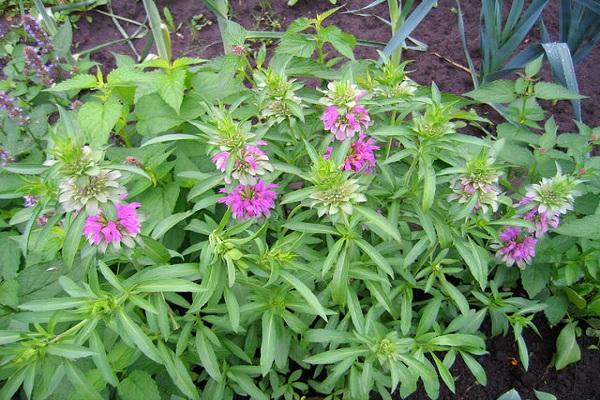
Cambridge scarlet (red)
A hybrid perennial plant with a long horizontal rhizome and erect stems, along which trichomes are abundantly distributed. Stem height varies from 80-100 cm. Oval-shaped opposite leaves up to 12 cm long in a light green hue. Inflorescences 6 cm in diameter develop at the top of the shoot.
Cambridge scarlet
Perennial with an elongated horizontal stem. The height of the shrub is 80-100 cm. Pale green leaves are located opposite each other on the shoots.
Jacob Kline
The plant has large flowers of a bright red hue, and the bracts are dark purple. The flowering period occurs in the first decade of July - the last week of August. Fragrant leaves are used for brewing tea. The maximum shoot height is 120 cm.
Preirinacht
A perennial flower with a tetrahedral stem up to 100-140 cm high. Large purple flowers, collected in whorled inflorescences, the diameter of which varies from 6 to 8 cm. They bloom from early July to late August. The ground parts of the plant have a tart lemon-mint smell.
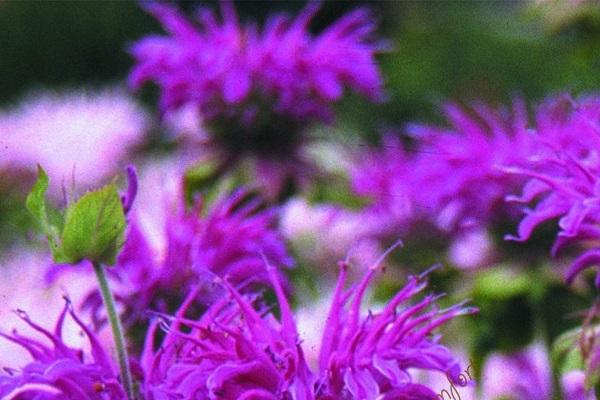
Dancing bird
The culture reaches 1.5 meters in height, is distinguished by a long rhizome and straight branchy shoots. Leaves are oval in shape with a toothy edge. Small flowers, due to their abundance, form lush inflorescences.
Snow White (white)
The variety with snow-white flowers looks spectacular in single plantings and in combination with other plants. The bush is short, compact. All ground parts of the flower have a pleasant characteristic aroma.
Flower growing technology
Growing flowers from seeds is done in two ways:
- sowing in open ground;
- using seedlings.
Once properly planted and cared for, the plant will thrive and respond with lush growth and lush bloom.
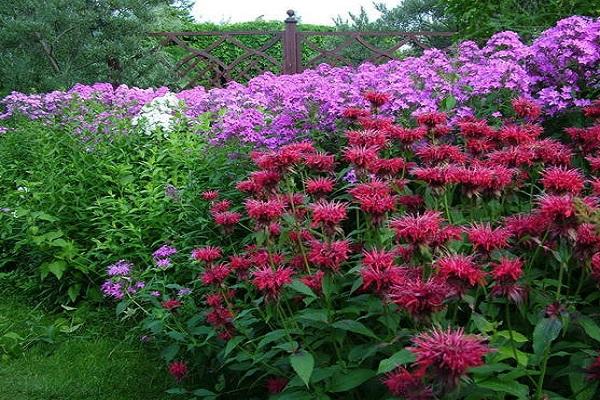
The necessary conditions
The main requirements of a plant when planting include the choice of the right place, the presence of optimal illumination, the nutrient composition of the soil, the temperature regime favorable for the culture and the humidity indicator.
Optimal location and lighting
The place is chosen well-lit and without drafts. Tall varieties lose their decorative effect in strong winds.
Planting a monarda in dark places is also possible, in which case the duration of its flowering and color saturation will be much less than that of representatives growing in direct sunlight.
The place must be selected in advance and covered with a film so that the ground under it warms up and thaws. The soil needs fertilization with manure, peat and mineral fertilizers based on potassium and phosphorus.
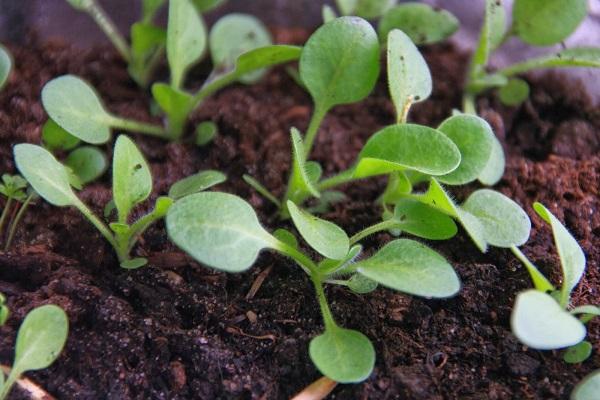
Required soil composition
It is recommended to choose an area with neutral or alkaline soil. The main condition for breeding monarda is wet, permeable soil.
Temperature regime
The plant takes root well in regions with a warm, mild climate.
Required humidity
A perennial needs a lot of moisture, so watering should be regular and timely, especially during the flowering period.

How to sow monarda in open ground
When sowing monarda in open ground, it is worth studying the features of the plant and using the knowledge in practice.
Timing
If the monard is planted immediately in open ground, then the optimal time for sowing seeds is April. The seedling method is carried out earlier, namely in February or March, since the temperature in the greenhouse can be adjusted.
In the spring
If the monard is grown in the south, then its seeds can be sown directly into the ground, in March, choosing a sunny, warm day. Cool weather will favor natural seed stratification. Seedlings will appear in April, which will need to be thinned out.
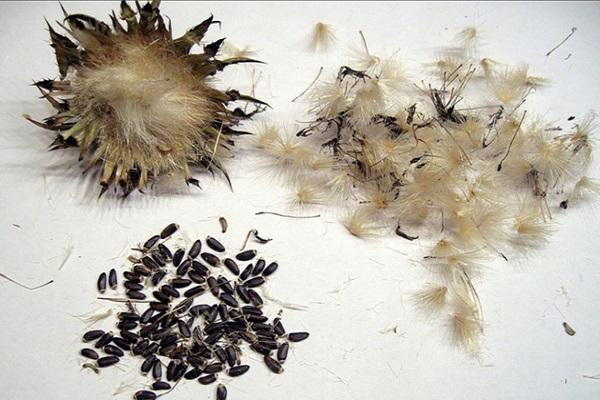
Before winter
For the winter, planting is not recommended, since due to severe frosts, the monard may not take root and die. Although many people practice sowing in the fall at the end of October, when there is no risk of germination of material in warm weather. Prepare the bed in advance, and then make grooves, keeping a distance of 25 cm. Sowing should be to a depth of 2.5 cm. To get beautiful and strong seedlings, make a dive in the spring.
Sowing technology
Sowing monarda seeds is an occupation for hardworking gardeners, since the germination of the planting material is quite low and sometimes the seeds do not retain their maternal properties.
It should be borne in mind that during autumn sowing, flowers sprout very slowly.
For planting, choose the right day, namely dry and sunny. The depth of the holes should not exceed 2.5 cm, cover the surface of the dug beds with sand. Moisten the flower bed after planting. When the first shoots are noticed, thin out the beds, removing the weakest specimens and weeds. With proper care, it will bloom only next year.
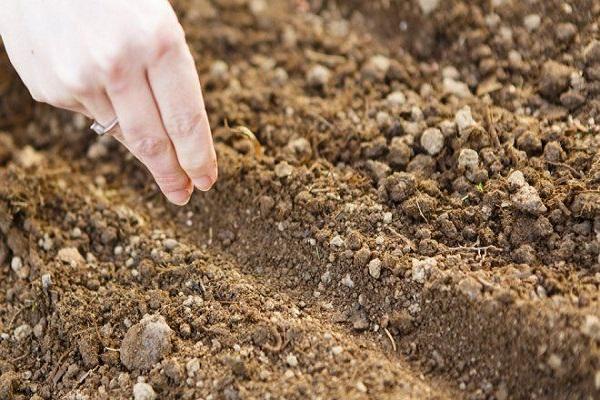
Nuances of growing a plant from seed for seedlings at home
Planting seeds for seedlings at home is performed in the following algorithm:
- To plant seeds in separate containers filled with a loose substrate, it is advisable to buy a soil specially designed for this purpose at a flower shop.
- Deepen the seeds by at least 2 cm.
- Cover the top of the container with a plastic bag or simply put the containers in the greenhouse.
- Germination will not keep itself waiting long and will begin on the 20th day after planting. When the seedlings have 4 real leaves, make a pick and plant each specimen in a separate container.
It should be noted that the monarda develops rather slowly, but after the plant gets stronger, growth will continue more intensively..

We organize competent care of the monard
If the planting of the plant was carried out according to all standards, then the perennial will be able to develop quickly and efficiently in the future without any violations. The growth and development of a flower in the future will depend on the correctness and regularity of crop care.
Watering
In autumn and spring, the monarda does not need a large amount of moisture, but in the summer, water it more often. In extreme heat and in the absence of rain, watering is recommended daily. A lack of moisture makes the plant vulnerable to a disease such as powdery mildew, which is very difficult even for an experienced gardener to cope with.
Top dressing
Like any other flowering plant, the monarda needs timely feeding. During the growing season, fertilizing should be carried out at least 2 times a month. In the spring, apply mineral fertilizers in 2 approaches, 1 time in 2 weeks. At the end of summer, give preference to potassium-phosphorus fertilizers, since they have a positive effect on flower formation and strengthen the root system. Potassium will help Monarda prepare for the cold weather.
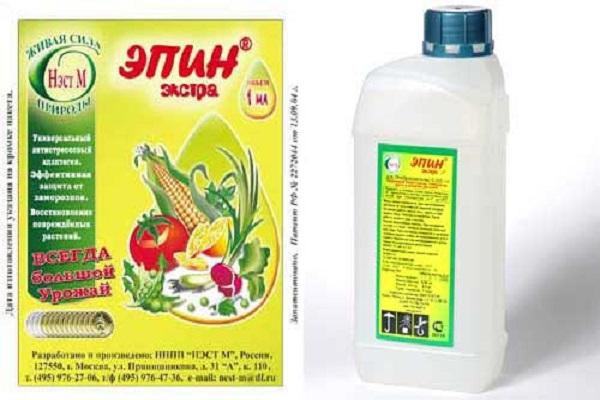
It is also recommended to carry out foliar dressing. For this, a mineral composition is used, diluted in a weak concentration. In case of prolonged drought, use the Epin stimulant solution.
Mulching and loosening the soil
Mulching and loosening the beds is necessary in order for the soil to retain moisture longer after watering. Use humus or peat for mulching. These substances are able to protect the soil from water evaporation and saturate the substrate. It is not recommended to use sawdust, needles, since they strongly acidify the soil and make the growing conditions of perennials extreme. Loosening will enrich the soil with oxygen, improve gas exchange and plant photosynthesis in it.
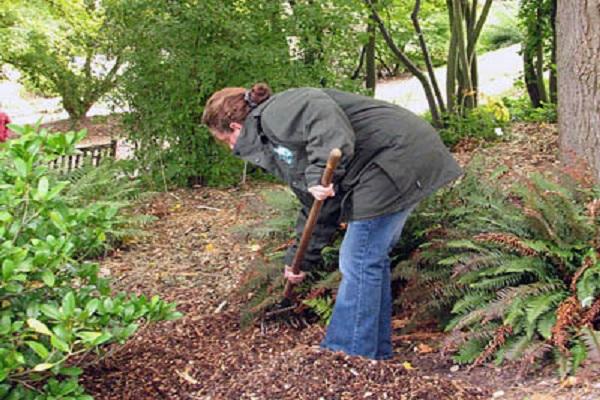
Do I need to cut the flower
The pruning time, as well as its need, is determined depending on the type of monarda. In most cases, you still cannot do without it. Trim the inflorescences in the fall when they begin to dry out.
Possible diseases and pests: control and prevention
Monarda is a fairly resistant plant, but it still needs prevention. To avoid damage to the culture by the fungus, you need to draw up a watering schedule. This will help the monarda to forget about powdery mildew forever.
Perennials can also pick up tobacco mosaic, rust and weevil. For prophylaxis, competently take care of the plant and choose in advance the firing place of growth.
Preparing for winter
Wintering usually takes place without complications. To prepare the plant for this period, you need to cut the crop, carry out mulching, cover the roots with spruce branches, lightly sprinkling it with earth.
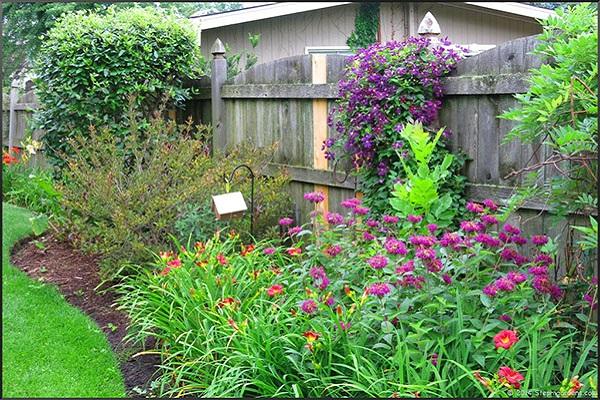
The perennial is resistant to frost, it does not need shelter for the winter, since it can withstand temperatures down to -25 degrees.
Transfer
In one place, the monard can hold out for about 4 years. After it needs to be transplanted to a new place of growth. When transplanting, it is worth dividing the bush.
Reproduction methods
Monarda reproduces both generatively and vegetatively. The method of dividing the bush or cuttings is more often used, since the percentage of seed germination is not at a high level, unlike other methods.
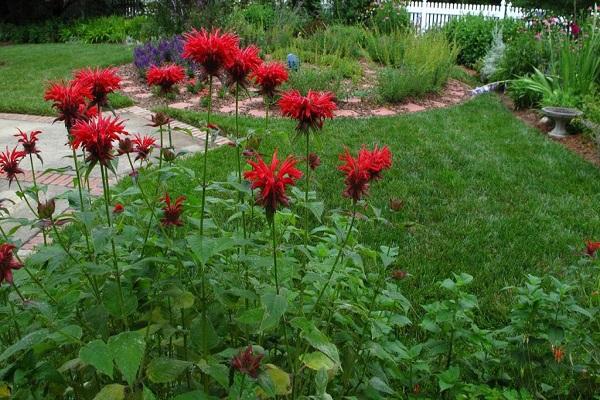
By dividing the bush
The division of the bush is carried out after the perennial monarda turns three years old. The procedure is carried out 2 times a year:
- mid-spring, when the soil warms up properly;
- the beginning of autumn, when the earth had not yet had time to freeze.
First you need to carefully remove the roots from the soil and divide them into several parts. Already send new monarda bushes to the flower bed to the same depth. The division can be performed in two years, when the bush grows strongly.
Cuttings
To implement this method, select at least 7 cuttings of monarda 0.1 m in size. It is better to use shoots from a large bush that has already grown quite strongly, but has not reached the flowering stage.
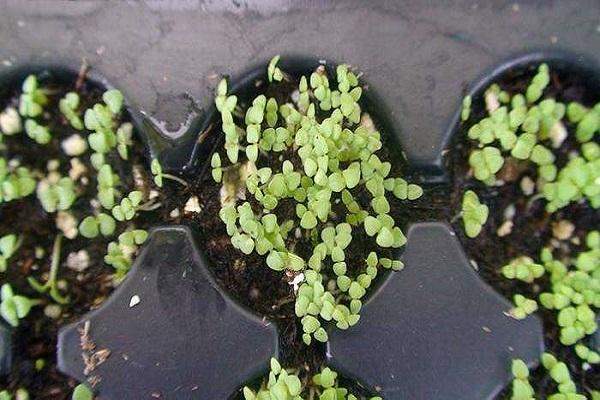
Cut off all the leaves on the bottom of the cutting, cut the top a little. Plant the prepared material in a spacious box filled with substrate and fertilize with minerals. Also, the cuttings can be simply placed in a container filled with water. After 3 weeks, you will notice that the root system has already formed. During this period, the plant should be moved to open ground.
Seeds
Collecting seeds of monarda begins at the end of September or August, for each variety its own ripening dates. Do not allow self-seeding, you need to collect the seed pods on time.
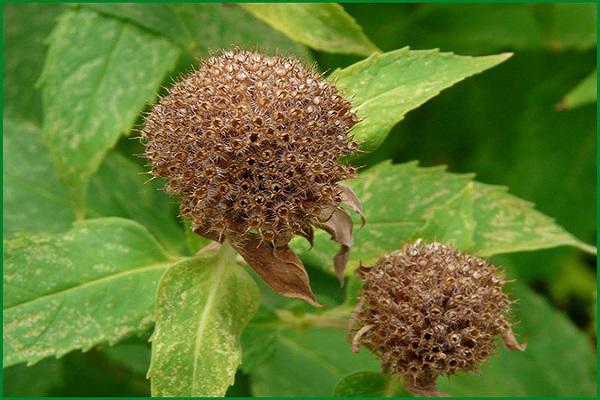
Not every plant, especially a hybrid one, has the ability to pollinate. The seeds are planted in special containers. The optimum temperature for germination of seedlings is 20 degrees. Growth is rather slow and may be delayed, but in the future it will accelerate significantly. After the onset of phase 4 of real leaves, make a pick. When the monarda seedlings are strong enough, they can be transplanted into open ground. The main disadvantage of this method is that the monard does not bloom even in the second year of development.
Monarda is an ornamental plant that is popular among gardeners due to its attractiveness and unpretentiousness. Even a beginner can cope with planting and leaving this exquisite flower, but first he should study the rules for planting and caring for a perennial.

